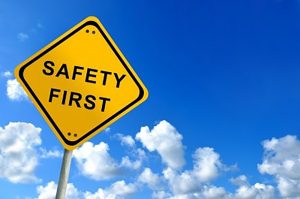
Tips for a Safer Work Site
Author: Joanne Loyola
Construction is a high hazard industry that involves a wide range of activities including construction, steel fabrication, steel erection, welding works, iron works, and more. To ensure a safer work site:
1.Report any types of workplace hazards, unsafe acts, or unsafe conditions.
If you notice something that could potentially cause harm to a person or the environment, report it immediately to your supervisor. These are also known as ‘Near Misses’. Reporting any near miss, unsafe acts, or unsafe conditions can prevent possible accident occurrences. It could potentially save lives, prevent injuries, and avoid property damage.
2. Inspect all vehicles, tools, and equipment before using.
Inspection before each use can save a person’s life. For example, fall protection equipment like safety harnesses and lanyards require inspection before each use to ensure there is no wear and tear, defects, or damage. Once a defect has been identified, the equipment MUST be TAGGED OUT OF SERVICE. Do not use the equipment until it has been repaired or replaced.
3. Competent Person.
Finding the right person for the job is one who embraces a safety culture and is a “competent person”. As per OH&S Legislation, the definition of a “Competent person” means someone who is adequately qualified, suitably trained, certified, with sufficient work experience.
Suitably trained means a person that has Certified Safety Training or Trades Certification from a recognized training institution.
A person who is not qualified or has no proper knowledge to perform a task is most likely to get involved in a workplace accident.
4. Toolbox Safety Meeting
Also known as Daily Tailgate Meetings, Safety Meetings, or Daily Huddle. Toolbox Safety Meeting is a daily safety meeting before the start of each work shift. It focuses on safety topics related to a specific job, which includes identifying workplace hazards, and safe work practices. In addition to the daily toolbox safety meeting, a weekly safety talk should take place to discuss any safety related topics that occurred during the week.
5. Pre-Project Planning
Pre-project planning must be done prior to the start of any new job, including a Fall Protection Plan. A fall protection plan is an essential part of the job before the project began. An effective fall protection plan includes job hazard analysis, safe job procedures, emergency response planning, mock drill, and proven fall protection rescue procedures.
Field Level Hazard Assessments should be completed prior to work being done. These forms help assess potential job site hazards and the risks they cause. Field Level Hazard Assessment forms should be viewed and signed off on by all workers on the job site.
These five tips are essential in promoting a safe and secure work site. It is important to remain vigilant; in 2016 alone there were over 240,000 lost time workplace incidents in Canada.
Pavilion Structures – Your Total Construction Destination
Toll Free: 1-877-322-8234
Local: (780) 488-1726
Click here for more information!
wordpress theme by initheme.com


